Affiliate disclosure: This post may contain affiliate links. Please see our Privacy Policy.
Swedish Filmjölk is made from a special culture that makes a unique drinkable yogurt. This traditional cultured dairy is similar to kefir in some ways, but it’s smooth and pleasant.
I’m not a big fan of Kefir, but I absolutely love Filmjölk. It’s the perfect probiotic drink (in my opinion).
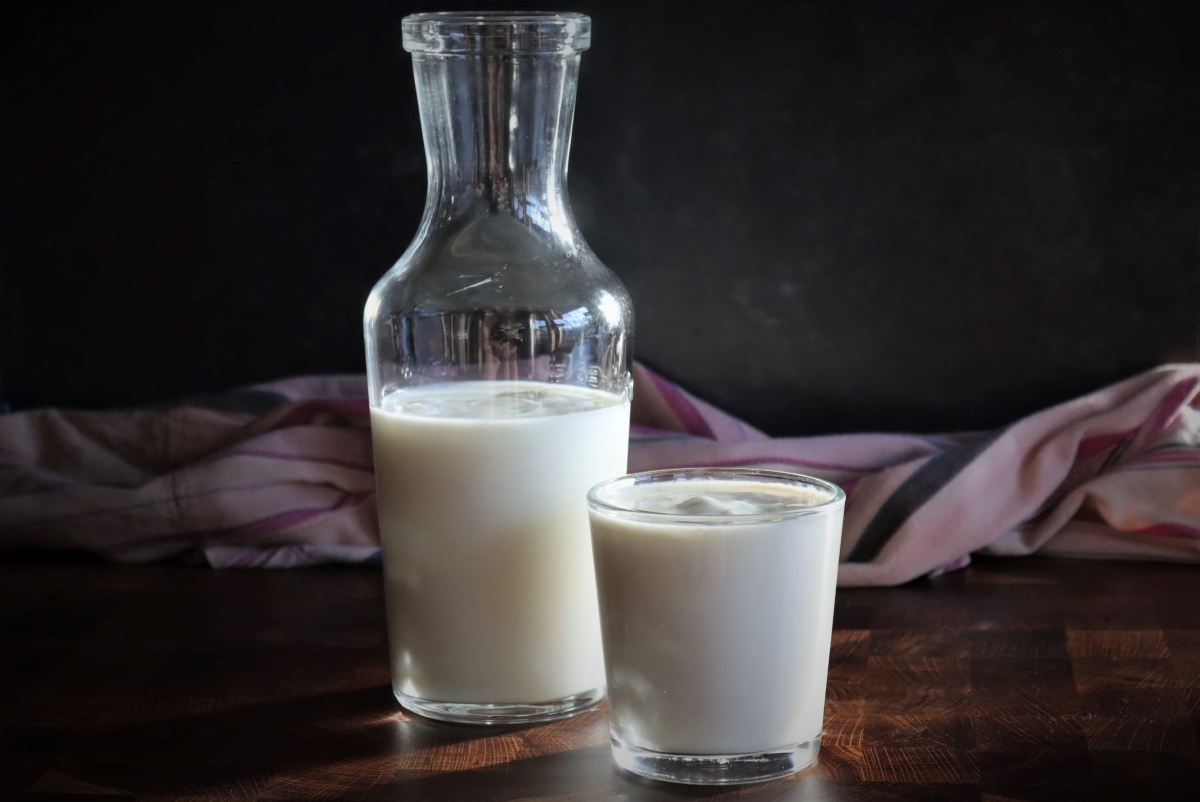
Cultured dairy has been around for as long as animals have been milked. Fresh milk won’t last long and will curdle within a day without refrigeration.
Unsurprisingly, just about every culture that works with dairy animals has its own traditional fermented dairy, and Sweden is no exception.
There are quite a few Nordic dairy ferments, from Icelandic Skyr (which is more of a cheese) to Finnish Viili (similar to yogurt, but with a fuzzy cultured top like brie cheese).
Unlike yogurts in warmer climates, which need 90 to 110-degree temperatures to thrive, nordic yogurts are Mesophilic Yogurts, and the culture at room temperature.
(What we usually think of as “yogurt” is Thermophilic and requires incubation to culture properly.)
Here in Vermont, especially in the wintertime, it’s tricky to maintain any space at 110 degrees to culture a standard yogurt culture properly. Next to the woodstove, it’ll alternate between way too hot and chilly cold throughout the 24-hour culture period.
My kids actually really love drinkable yogurt anyway and often ask for a yogurt drink as a treat from the grocery store. Why buy expensive little bottles of sugar-laden yogurt drinks when there’s a traditional drinkable yogurt that’s perfectly easy to make at home?
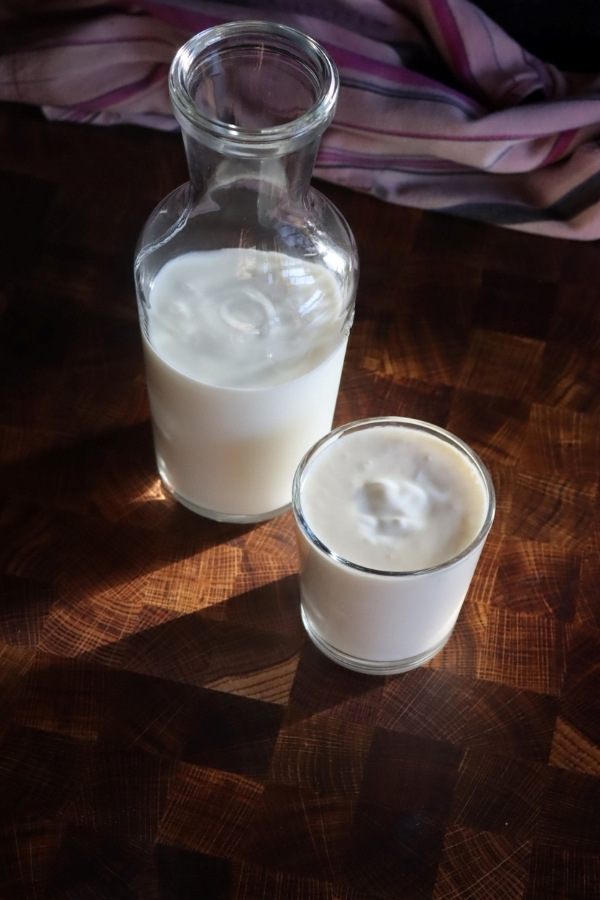
What is Filmjölk?
Filmjölk is a traditional dairy ferment that creates a thickened but drinkable “yogurt” type drink. It’s been around since the Viking age, and it’s common in Nordic markets today, sold either unflavored or flavored with berries, vanilla, or honey.
According to Wikipedia,
“Filmjölk (Swedish: [ˈfîːlmjœlk]), also known as fil, is a traditional fermented milk product from Sweden and a common dairy product within the Nordic countries. It is made by fermenting cow’s milk with a variety of bacteria from the species Lactococcus lactis and Leuconostoc mesenteroides. The bacteria metabolize lactose, the sugar naturally found in milk, into lactic acid which means people who are lactose intolerant can tolerate it better than other dairy products. The acid gives filmjölk a sour taste and causes proteins in the milk, mainly casein, to coagulate, thus thickening the final product. The bacteria also produce a limited amount of diacetyl, a compound with a buttery flavor, which gives filmjölk its characteristic taste.”
There you have it. It’s a slightly thickened probiotic milk, where the lactose content has been substantially reduced, and a slightly acidic, buttery flavor is developed.
It’s eaten in Norway, where it’s called surmjølk or kulturmjølk, as well as Latvia where it’s called rūgušpiens or rūgtpiens.
Where to Buy Filmjölk Culture
To make Filmjölk, you’ll need a special culture. It’s a mix of bacteria that work together to make the finished product, similar to the way that Kombucha or Kefir is a community of bacteria.
You can buy a freeze dried Filmjölk starter culture online, or you can just re-culture with existing Filmjölk.
Where on earth are you going to find Filmjölk outside of the Nordics? Well, believe it or not, it’s likely already for sale in the supermarket.
Siggis, a popular Icelandic yogurt brand, also makes drinkable yogurt. If you look closely at the label, it says “Swedish Style Filmjölk.”
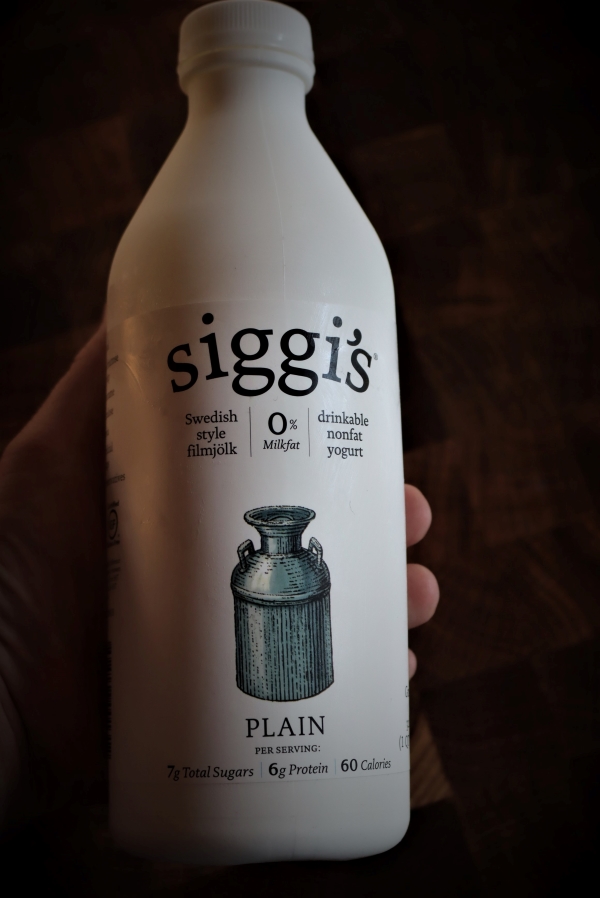
While yogurt is usually just one or two cultures, their Filmjölk includes the following active cultures:
- L. lactis subsp. lactis
- L. lactis subsp. cremoris
- L. lactis subsp. lactis biovar diacetylactis
- Leuconostoc spp.
- S. thermophilus
- L. delbrueckii subsp. bulgaricus
Once you have the culture, either as a freeze-dried packet, or a store-bought bottle of Filmjölk with active cultures, the process for making drinkable yogurt is pretty simple.
How to Make Filmjölk (Drinkable Yogurt)
Start with about a quart of either raw or pasteurized milk. Most people choose pasteurized because it allows you to control the culture more carefully. The native flora, namely other mesophilic culture bacteria, have already been killed in the pasteurization process.
I’m using raw milk that I picked up fresh from the dairy down the road. Super fresh, and it’s how Filmjölk would have been made traditionally (for hundreds of years before pasteurization).
(It’s also not homogenized, which means the cream separates during the cultuing process. Shake or stir it back in, or leave it there for a cream-top version.)
Whole milk or skim work fine, it depends on your preference.
In the US, it’s eaten as a protein-rich health food, so it’s often made with skim milk. Traditionally, it’s made with full fat or skim milk, and everywhere in between based on personal preference.
Mix roughly 1/4 to 1/2 cup of prepared Filmjölk into a quart of milk, stirring to completely incorporate the culture. (Alternately, simply add the freeze-dried culture to the milk instead.)
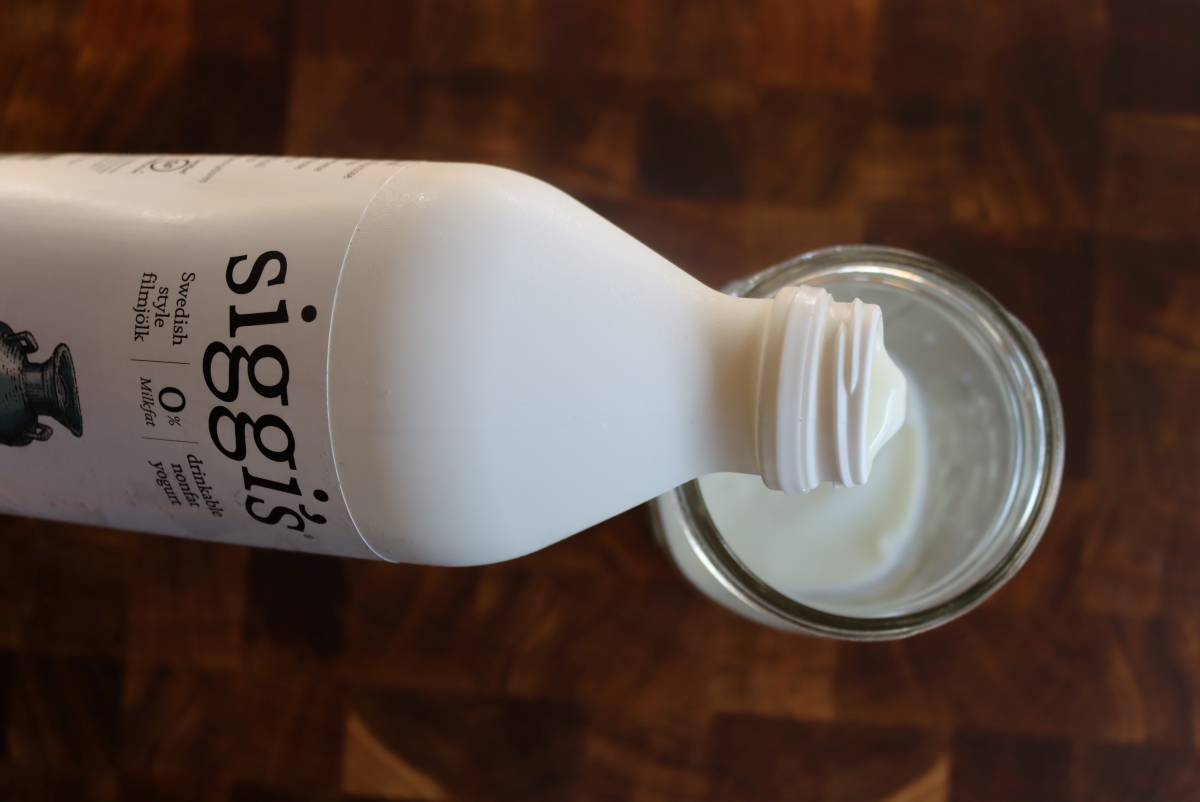
Allow the culture to sit covered at room temperature for 1-2 days until it’s thickened to your liking.
(If you’re in a hot climate, choose a cooler part of the house, as this would have been made in the cool cellar in the summer months. You’re looking for temperatures around 65 to 75 degrees F, roughly.)
How to Use Filmjölk
Once cultured, you can drink the Filmjölk immediately if you like, or store it in the refrigerator for a few weeks.
Add flavorings if you’d like, such as crushed fruit or honey, to taste.
I’ve also read that it’s popular to pour it in a bowl and eat it with museli, basically making a cereal/milk-type breakfast (with thicker, tangier milk).
I think it’s really spectacular as is, with nothing added, but I also love the taste of plain natural yogurt. My kids like it with just a hint of sweet, so I add a teaspoon or two of our homemade maple syrup to their cups.
Filmjölk can also be used in baking, in place of recipes that call for buttermilk, sour cream, or yogurt.
Enjoy!
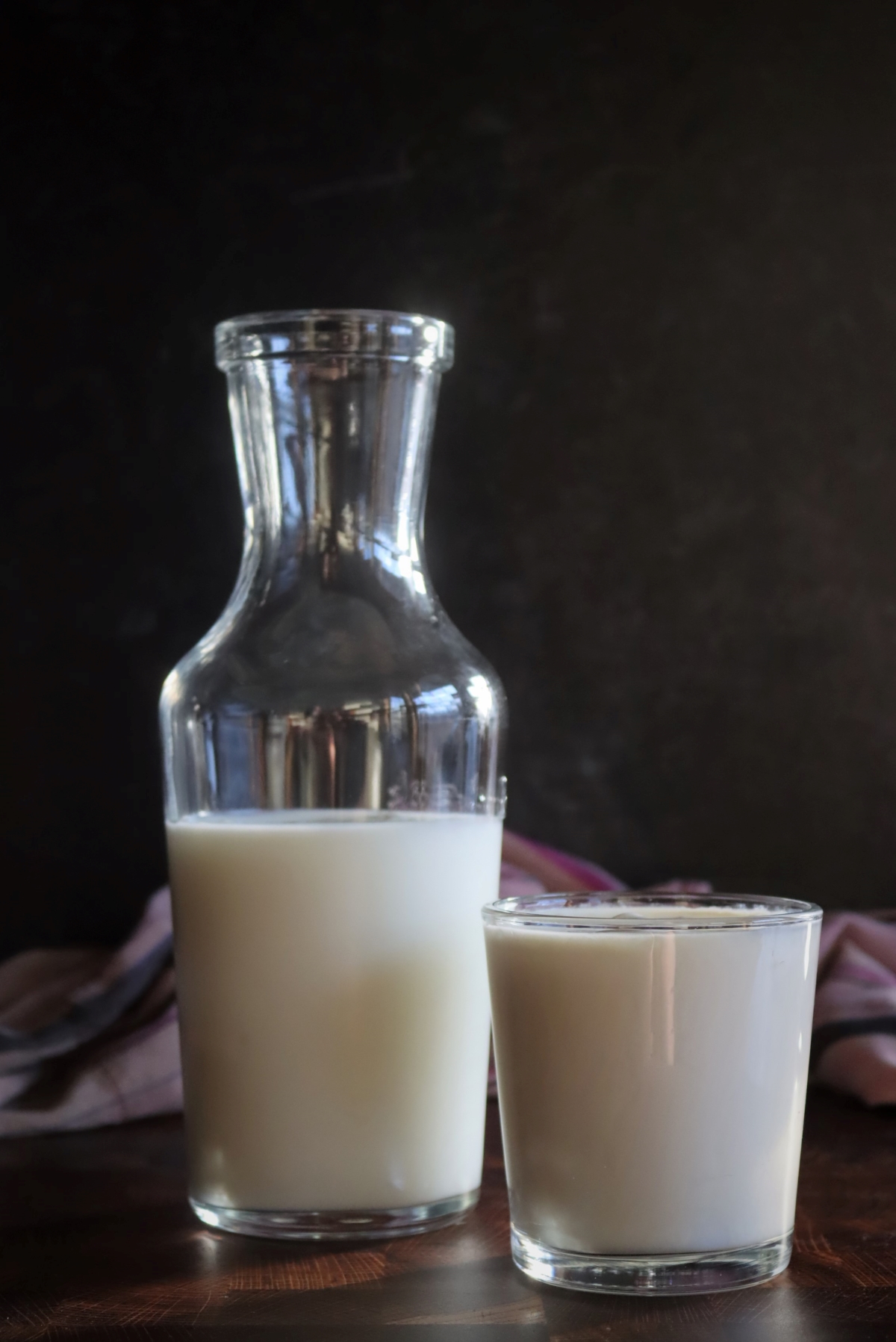
Cultured Dairy Recipes
This winter is going to be a winter of homemade cheese and traditional cultured dairy, and I already have nearly 20 pounds of cheese aging in the basement. Clothbound cheddar, pepper jack, parmesan, and more. Recipes all coming soon.
Beyond that, I’ll be making cultured dairy from around the world…so stay tuned.
In the meantime, though, check out these tasty cheesemaking recipes already posted:
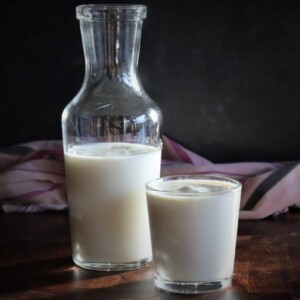
Swedish Filmjölk (Drinkable Yogurt)
Ingredients
- 1 quart Milk, raw or pasteurized
- 1/4 cup Filmjölk starter culture, or 1 packet freeze-dried starter culture
Instructions
- Begin with a quart of milk. If you’re using raw milk, shake it to mix the cream back in (it naturally separates during the culturing process). Both pasteurized and raw milk work well for this recipe, though pasteurized milk ensures better control over the culture.
- Mix about 1/4 to 1/2 cup of Filmjölk culture (or the same amount of already made Filmjölk) into the milk. Stir thoroughly to incorporate the culture. If using freeze-dried culture, simply add it directly to the milk.
- Cover the milk and let it sit at room temperature for 1-2 days, ideally between 65-75°F. The length of time will depend on how thick you want your Filmjölk. After 1-2 days, it should have thickened and developed a tangy, slightly buttery flavor.
- Once thickened to your liking, you can enjoy the Filmjölk immediately or store it in the refrigerator for up to two weeks.
- Add flavorings such as crushed fruit, honey, or even maple syrup if desired. Filmjölk can also be eaten as a breakfast cereal with muesli or used in baking recipes that call for buttermilk, sour cream, or yogurt.
Nutrition
Nutrition information is automatically calculated, so should only be used as an approximation.
Fermentation Recipes
Fermenting more than just dairy?
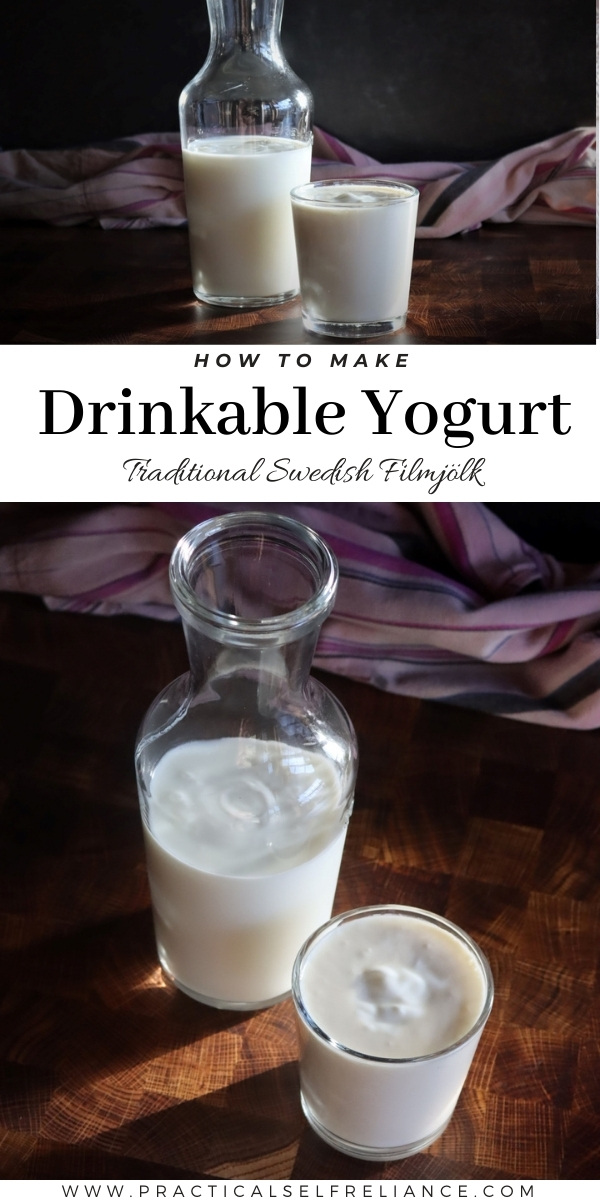

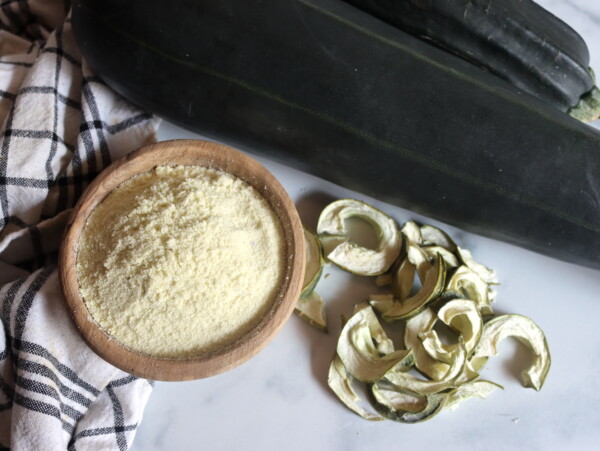


Great article. I made some of this by using Sigi’s plain drinkable yogurt. People have asked if The milk needs to be heated. My question is does Raw milk need To be heated. most articles say yes. They also say your culture needs to have pasteurized milk to survive. What are
Your thoughts? Thanks!
This recipe was made using raw milk however some people to like to use pasteurized milk in order to have more control over the culture. I personally like the benefits of raw milk.
Thank you for your website. I’ve enjoyed reading it and adding to my skills. I bought some Siggi’s “drinkable yogurt.” It no longer says “filmjolk” on the bottle, but it does on its website. Is it still possible to safely culture at room temperature? The cultures listed look very much like those on Siggi’s and Stonyfield yogurt containers.
You just want to be sure that the cultures listed are mesophilic as opposed to thermophilic. Thermophilic cultures require incubation in order to culture and mesophilic cultures do not. Therefore mesophilic cultures can be fermented at room temperature.
Nice article, looks delicious Can the starter be added to cold milk or does the milk need to come up to temp before mixing?
It’s fine to add it to cold milk.
So from what I understand, the milk doesn’t need to be heated like yogurt. Is this correct? Just came back from Sweden with 2 cartons of filmjölk in my luggage:-)
That’s correct. It should ferment at room temperature, roughly somewhere between 65-75 degrees farenheit.
Hello!
I have tried to make this on 4 separate occasions using Siggi filmjolk as a starter. While I get the taste and smell, my milk never thickens. Any suggestions on why this is happening and what I could do to have success? Many thanks!
Can you tell me what kind of milk you used, how long did you let it culture and what is the temperature in your house?
Hi, great article. I can’t seem to find the drinkable yogurt but can find the Siggi’s plain yogurt. Can this be used? I’ve made a variation of Swedish Style Filmjölk. From plain Greek yogurt before and it was close to what I’ve had in Sweden but would like to try this recipe. Thank you.
As long as it contains the same cultures it will work.
I’ve been drinking Siggi’s nonfat plain fil/drinkable yogurt for a couple of years, but it’s hard to get in our area consistently. I’m interested in making my own but haven’t made yogurt before. After a bad experience as a kid with a dairy product I left out overnight, I’m a bit hesitant. Have you had any trouble with spoilage? Is there something with the cultures used that makes it safe? Thanks!
What was the dairy product that you left out overnight? If it was a product that didn’t have live, active cultures then it’s just going to spoil. The live, active cultures turn milk sugars into acid. This acidification process naturally helps to preserve the milk.
Can you make this with store bought kefir?
This is similar to kefir but not exactly the same. I would recommend ordering a culture online or purchasing a bottle of Filmjölk with active cultures from the store.
Hello great article. Can a person use goat milk instead of cows milk?
I think goat milk would work great!
Thanks ever so much for these insights. Question: can this be made with plant based milks?
Cultures for Health has a lot of information on using plant-based milks. One thing to consider is that you may need to add a thickener which might not necessarily apply here since you’re making a drinkable yogurt. The other consideration is that the cultures will not survive long term in a non-dairy milk so you will need a new culture each time.
Hi (maybe you answered this somewhere, I don’t find):
Thanks for this recipe— It sounds like there’s no need to heat milk first as some yogurt recipes suggest?
No because this yogurt cultures at a lower temperature than most.
This would be to cold here during the winter. Most of my rooms are around 50F. Only the living room is 68 and more.
I love drinkable yoghurt. We lived in Norway and they have a similar product, which I do miss over here, it is called “kulturmelk”. Delicious.
When I make Yoghurt I use the old “bed” method my grandparents used under WWII.
After mixing the culture into the warm milk it is filled in wide mouthed jars. Then I set the jars in a small box and wrap a thick towel around it. This goes under the down cover into the guest bed and a hot water bottle is added. After 7 – 10 hours “in bed” the yoghurt has set and will be stored in the fridge. Worked all winter for me. I used ultra filtered whole milk, 2% milk and normal store whole milk. Works for all.
It saved me from having to buy an instapot.
This recipe actually needs temperatures of 65-75 degrees F, so no need to put it to bed. It can just be left out at room temperature.
This is so cool! Can’t wait to try it.
Can the cycle of reusing a starter be repeated indefinitely? Or does the starter eventually go bad?
Also can you freeze (or otherwise store) a portion of starter for use later?
Thank you! 🙂
When I make regular yogurt, I always reserve a 1/4 cup for the starter from each batch and stick it in the freezer for my next batch.
So, can the Siggi’s Filmjolk be re-cultured perpetually if proper sanitation is practiced? IOW, is Siggi’s Filmjolk gonna act like a true heirloom, where one doesn’t have to worry about the bacteria cultures changing so much that eventually one would have to buy another bottle?
Thank you for this blog, it’s been helpful.
Yes, that’s my experience. You can perpetually use the culture once started, and you don’t need to buy a new bottle so long as you keep it going.
Thank you for your response! I really admire people who take the time to respond and answer questions. I couldn’t obtain that info from the company due to their lack of response, so your experience helps.
Wish you the best with your blog.
Thank you so much. We’re so glad to help.
Another wonderful article! I’m adding milk and Siggis to my next shopping list to try this.
So glad you enjoyed the article.